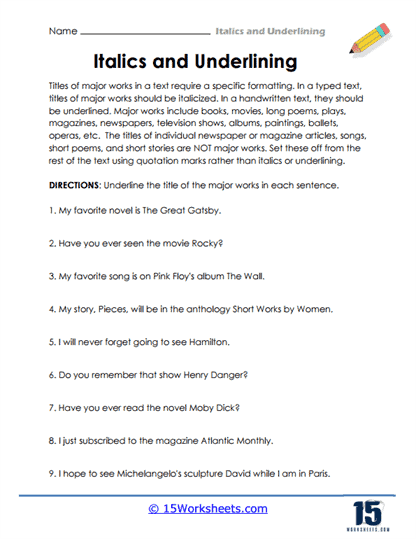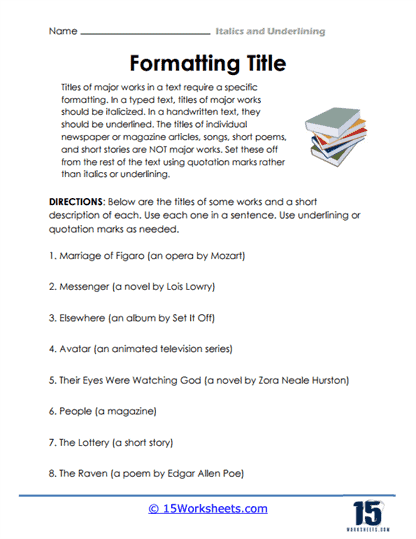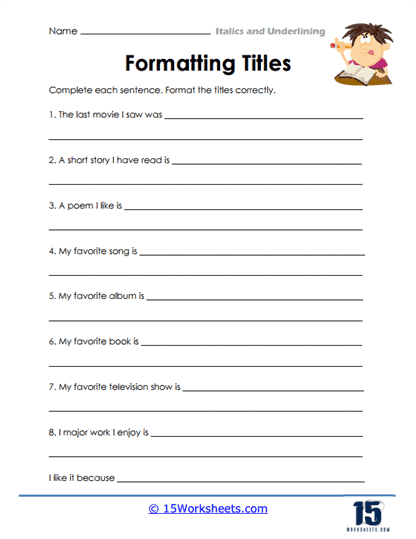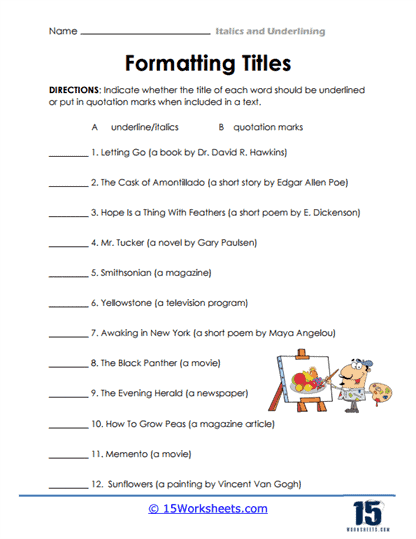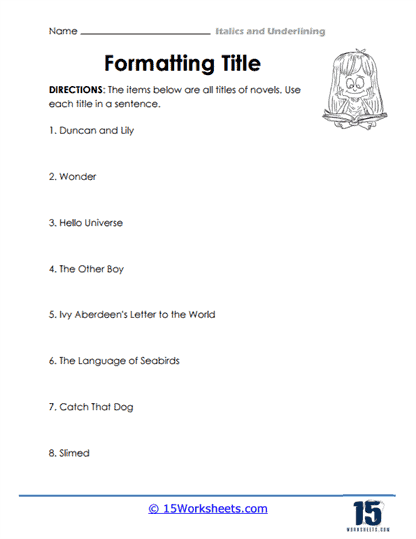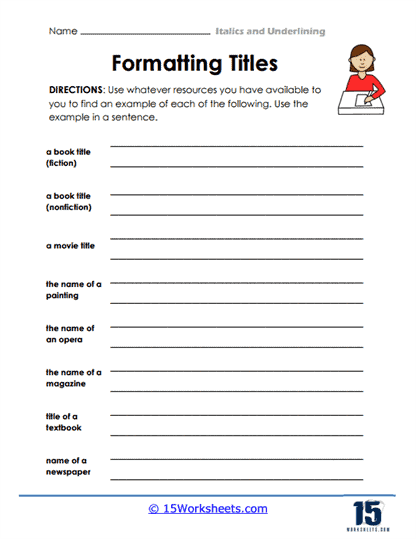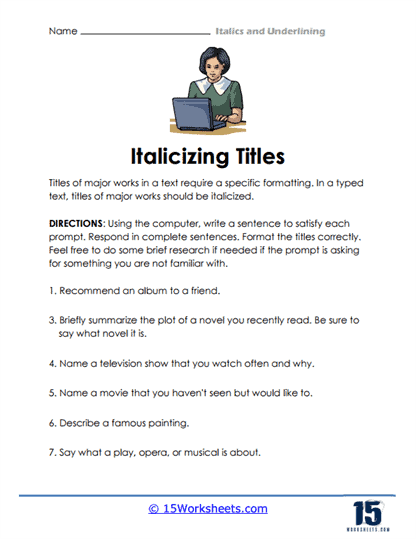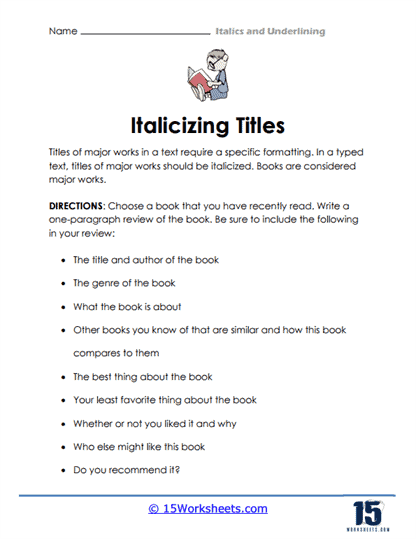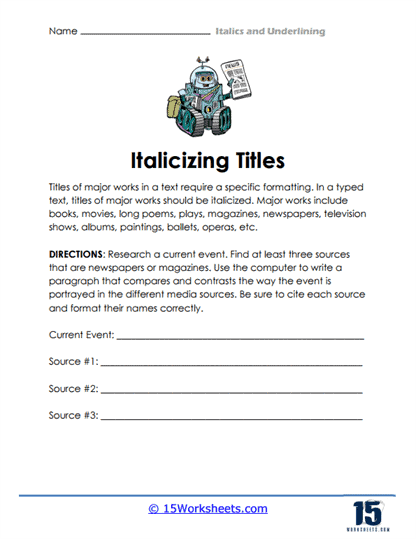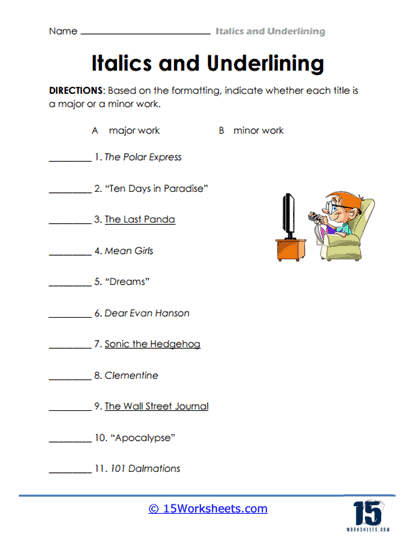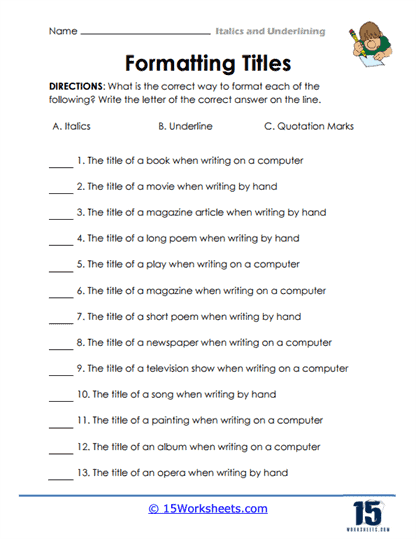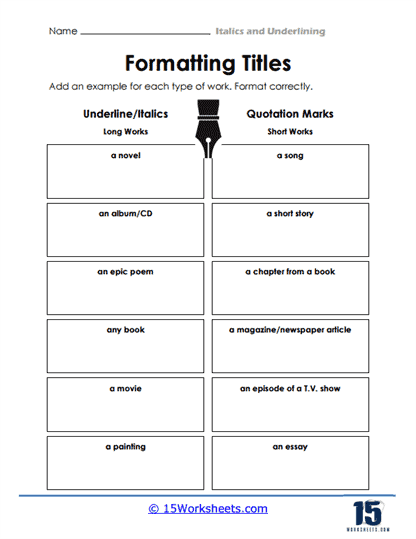Italics Worksheets
All About These 15 Worksheets
The goal of these worksheets is to help students understand and practice the use of italics in writing. The correct use of italics can often be a challenging concept for students, and these worksheets aim to provide clear guidelines and exercises for practice.
Generally, italics are used for:
- Titles of long works (like books, movies, albums, or artworks).
- To emphasize a word or phrase.
- Foreign words or phrases.
- Words, letters, or numbers mentioned as themselves.
Here’s an example of what an exercise in an Italics Worksheet might look like:
Underline the words that should be in italics:
a) Have you read Harry Potter and the Philosopher’s Stone?
b) The word “juxtapose” is interesting.
c) My favorite album is Abbey Road by The Beatles.
d) Do not forget to carry the number 8.
In this exercise, students will have to identify and underline “Harry Potter and the Philosopher’s Stone”, “juxtapose”, “Abbey Road”, and “8”, as these should be italicized.
However, it’s important to note that in actual handwriting, instead of using italics, we often underline words for emphasis or to indicate titles. This is because italics cannot be easily represented in handwriting, hence the instructions to underline in the example above. In printed text or typed text, these underlined words would usually be italicized.
What is the Purpose of Italics vs Bold in Writing?
Italics and boldface are both ways to emphasize text, but they’re used in different ways and have different connotations. Here’s a basic overview:
Italics are typically used to indicate:
- Titles of long, standalone works like books, albums, movies, and artworks.
- Foreign words or phrases.
- Words, letters, or numbers when referred to as themselves.
- Emphasis on a particular word or phrase within a sentence.
Bold is often used:
- To highlight key points or important information in a text, like in a textbook or an instruction manual.
- For headings and subheadings.
- To draw attention to keywords in a text.
In general, the use of italics is often more subtle, while bold is used for stronger emphasis or to draw the reader’s eye to a specific point. Remember, overuse of either can make a text harder to read, so they should be used sparingly and only when necessary.
Keep in mind that these are not hard-and-fast rules. The use of italics and bold can vary depending on the specific style guide you’re following (like APA, MLA, or Chicago style) or the norms in different types of documents or publications.

